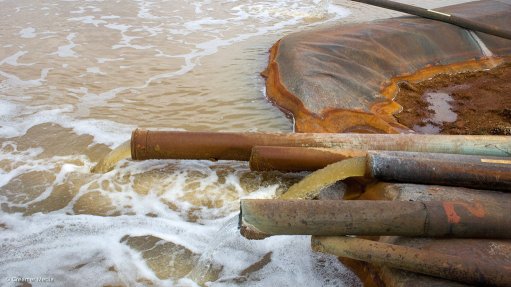
EARLY WARNINGS In 1996, the JCI mining group made proposals to manage the flooding of the Eastern and Western basins of the Witwatersrand
Photo by: Megan van Wyngaardt
The current acid mine drainage (AMD) challenges in the greater Johannesburg metropolitan area could have been prevented had government heeded the advice of the ‘Strategic Water Management Plan’ (Swamp) report in 1996, asserts JSE- and NYSE-listed surface gold miner DRDGold Ergo Mining operations director Jaco Schoeman.
Schoeman made these comments during his presentation at black-owned training and conferencing company Intelligence Transfer Centre’s fifth yearly EnviroMining conference, held in Johannesburg last month.
He pointed out that, in 1996, the JCI mining group made proposals to manage the flooding of the Eastern and Western basins of the Witwatersrand in the report, which was prepared by consulting environment engineering firm Johan Fourie & Associates.
The solutions proposed in the Swamp report were “shot down” by the Department of Water Affairs (DWA) because the department had an “issue” with the private sector selling treated water to State-owned water utility Rand Water, Schoeman said.
Fourteen years later, in 2010, the gold mining industry reconvened to provide a long-term solution for the DWA regarding AMD in all three basins.
“The gold mining industry, over . . . about seven years, spent R75-million in research, documentation, specialist studies and the development of pilot plants to come up with a long-term solution for the challenge of AMD,” he stated.
During this period, the industry had developed several new technologies specifically to combat AMD, he pointed out.
Schoeman added that the initiative to deal with AMD would have been fully funded by foreign investors, the Development Bank of Southern Africa and the Industrial Development Corporation.
However, the DWA also rejected this proposal in February 2011 for the same reason – “a result of regulatory and political ideologies” – it had rejected the recommendations of the Swamp report, he added.
Nonetheless, Schoeman stressed that government would eventually have to implement the commercialisation of water to ensure that AMD was dealt with effectively.
“Otherwise South Africa could end up with another Eskom-type disaster, which the public will have to pay to fix,” he warned.
Commercialisation Roadmap
Schoeman said the commercialisation of water must be undertaken within a regulatory framework, developed between the private sector and the regulator.
“One of the solutions that we presented as industry to the DWA in 2010 was that industry would have implemented these solutions on a totally open-book basis, whereby the costs of running a facility would have been the cost of the facility itself,” he noted, believing that this would have been identical to government’s receiving a loan from a bank to implement a project or a particular solution.
He further emphasised that industry’s proposal was “never” about a privately owned company selling water to the public.
“The proposal was aimed at providing government with funding, as well as developing water management infrastructure. In return, industry players intended to receive only their return on investment.
“. . . government would still have collected the money from the public for the use of water and would not have surrendered its control over these water resources,” he concluded.